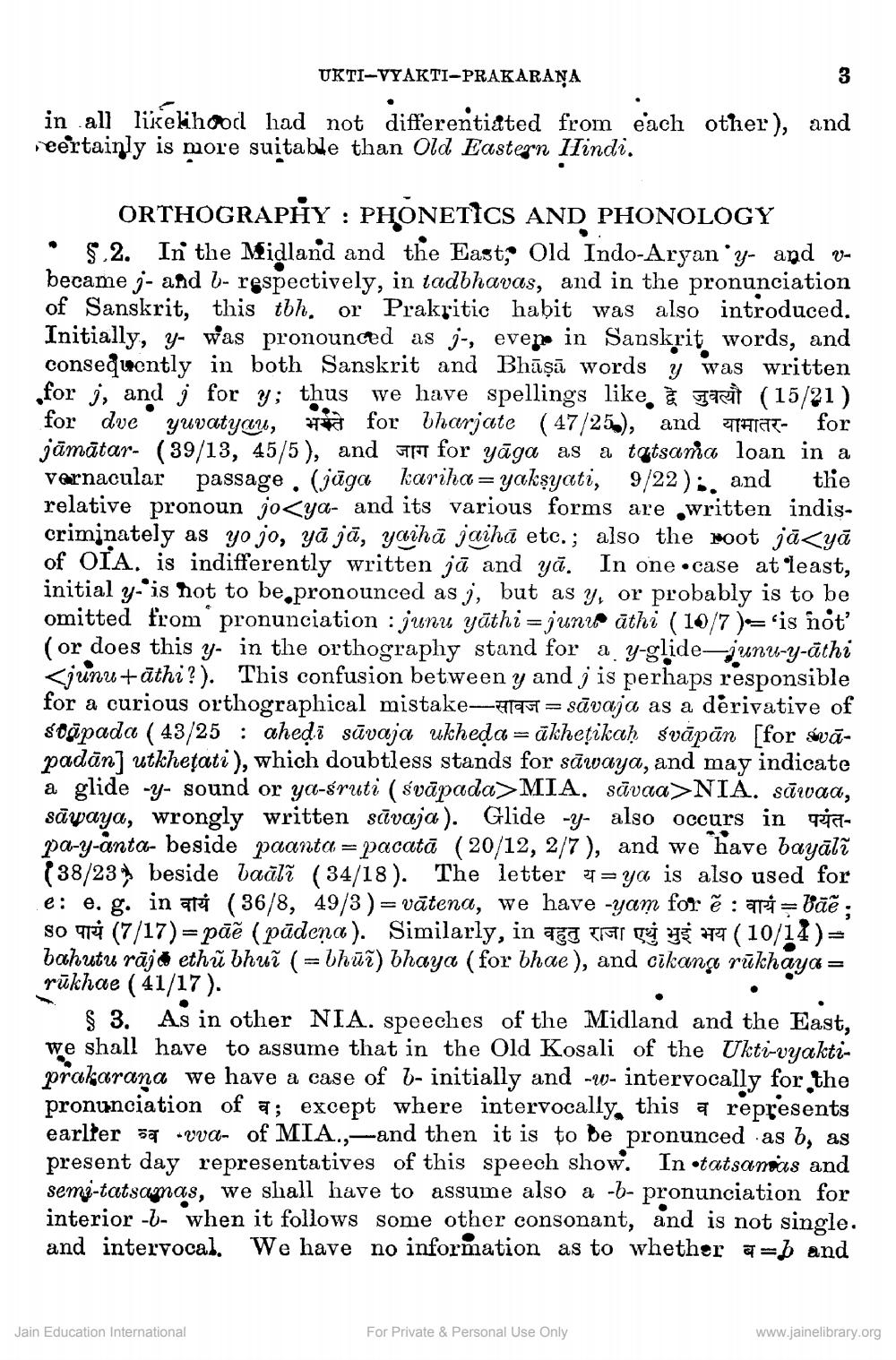________________
UKTI-VYAKTI-PRAKARANA
in all likelihood had not differentiated from each other), and eertainly is more suitable than Old Eastern Hindi.
ORTHOGRAPHY : PHONETICS AND PHONOLOGY • $.2. In the Midland and the East; Old Indo-Aryan'y- and vbecame j- and b- respectively, in tadbhavas, and in the pronunciation of Sanskrit, this tbh. or Prakritic habit was also introduced. Initially, y- was pronounced as j, even in Sanskrit words, and consequently in both Sanskrit and Bhāṣā words y was written ,for j, and j for y; thus we have spellings like. TAKT (15/21 ) for dve yuvatydy, ** for bharjate ( 47/25m), and thaR- for jāmātar- (39/13, 45/5), and it for yāga as a tatsana loan in a vernacular passage. (jūga kariha= yakşyati, 9/22):, and the relative pronoun jo<ya- and its various forms are written indiscriminately as yo jo, yā jā, yaihā jaihã etc.; also the root jā<yā of OIA. is indifferently written jā and yā. In one case at least, initial y-'is not to be.pronounced as j, but as y, or probably is to be omitted from pronunciation : junu yāthi=junu āthi (1017)='is not (or does this y- in the orthography stand for a y-glide-junu-y-āthi <junu+āthi?). This confusion between y and j is perhaps responsible for a curious orthographical mistake- 5 = sāvaja as a derivative of soőpada ( 43/25 : ahedi sūvaja ukheda = ākheţikah svāpān [for svāpadān] utkhețati), which doubtless stands for sāwaya, and may indicate a glide -y- sound or ya-sruti ( svāpada>MIA. sāvaa>NIA. sāwaa, sāwaya, wrongly written sūvaja). Glide -y- also occurs in pinpa-y-anta- beside paanta = pacatā (20/12, 2/7), and we have bayālī (38/23 beside baālī (34/18). The letter t= ya is also used for e: e. g. in atei (36/8, 49/3)= vätena, we have -yam for ē : ari= Bãe ; so pi (7/17) = pāě (pädena). Similarly, in het te ri UE 272 (10/14)= bahutu rājo ethū bhuí ( = bhūž) bhaya (for bhae), and cikanço rūkhāya = rūkhae (41/17).
§ 3. As in other NIA. speeches of the Midland and the East, we shall have to assume that in the Old Kosali of the Ukti-vyaktiprakarana we have a case of b- initially and -w- intervocally for the pronunciation of a; except where intervocally, this a represents earlter 50 PVC- of MIA.,--and then it is to be pronunced as b, as present day representatives of this speech show. In otatsansas and seme-tatsamas, we shall have to assume also a -b- pronunciation for interior -b- when it follows some other consonant, and is not single. and intervocal. We have no information as to whether a=b and
Jain Education International
For Private & Personal Use Only
www.jainelibrary.org




